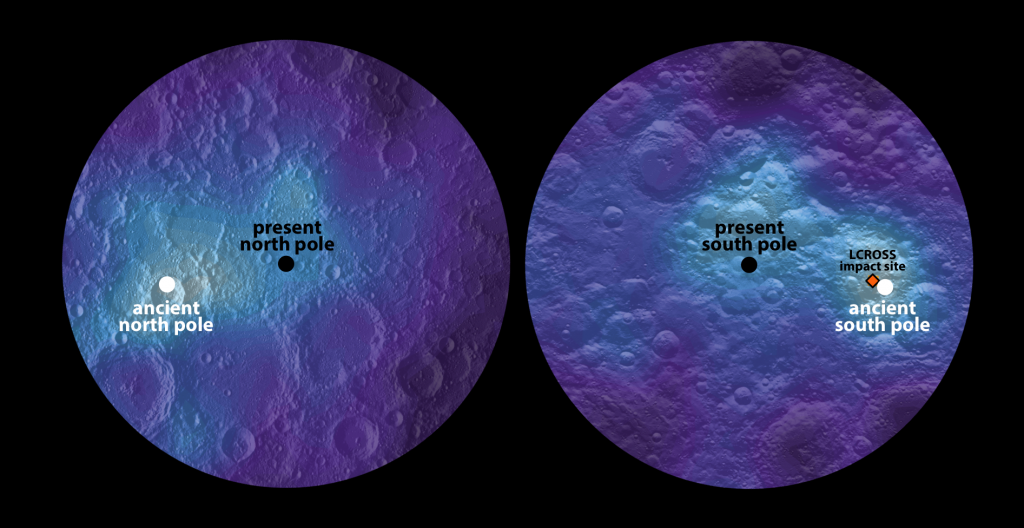
Maps of lunar polar hydrogen (a proxy for water ice). The hydrogen abundance maxima (white dots) are offset significantly from the present north and south pole, and are inferred to be ancient lunar spin poles. (Image Credit: James Tuttle Keane)
The moon once rotated on a different axis than the one it does today, according to researchers. Polar hydrogen deposits are located near the Moon’s poles, however their location is inconsistent with where ice would be expected to form with the current thermal environment of the moon.
Researchers found that the Moon’s polar hydrogen deposits are directly opposite each other and are located at an equal distance from where they would be expected to form, only in opposite directions. Researchers believe this shows the Moon’s axis of rotation has shifted by about six degrees.
Original research paper published in Nature on March 23, 2015.
Names and affiliations of selected authors
